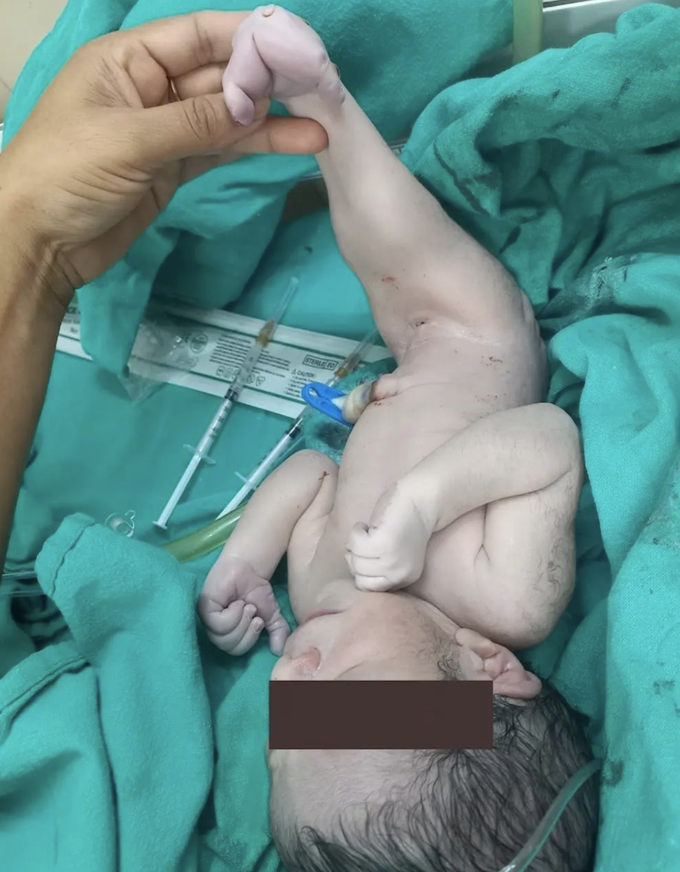


The mermaid syndrome
A 30-year-old female with G3P2L2 was booked for antenatal checkup in a dispensary. She had previous two full-term normal vaginal delivery of both male child. Her first ultrasound was done at 24 weeks which showed twin monochorionic pregnancy. Fetus A was normal, while fetus B had absent kidneys and bladder. The weight of fetus B was 30% less as compared to fetus A. The female was counselled. She wanted to continue her pregnancy as one fetus was normal. The female was referred to medical college for further management. Ultrasound done in the hospital at 37 weeks showed Fetus A of 2.8 kg in breech presentation with all parameters corresponding to 37 weeks, while Fetus B of 1.7 Kg, with all parameters corresponding to 31 weeks and nil liquor. This was a case of discordant twin. The patient was taken for caesarean section because of term pregnancy with the first twin in breech presentation. Twin A was a male baby of 2.5 kg. Twin B was a sirenomelic baby of 1.6 kg with an unknown gender. Physical examination of Twin B at birth showed the infant had fused lower limbs with malrotated toes, no external genitalia, no anal patency and the face showed a receding chin. X-ray showed two femurs, two tibias, only one fibula, sacral agenesis, and malformation of the pelvis. The mermaid syndrome, also known as sirenomelia, is a rare, fatal multi-system congenital syndrome. The most common findings are lower limb fusion into a single extremity, deformities of the sacrum and pelvic girdle, absence of external genitalia, absence of anal patency, and lethal renal abnormalities. These infants frequently display Potter's facies and pulmonary hypoplasia as a result of the oligohydramnios that result from renal agenesis. In the literature, 300 cases have been described and 15% of these cases are twins most frequently monozygotic. The incidence of sirenomelia is 0.99 per 100,000 live births, with stillbirths accounting for around one-third of cases. Case credit: Di Lorenzo M, Brandt ML, Veilleux A: Sirenomelia in an identical twin: a case report. J Pediatr Surg, 26:1334-1336. 10.1016/0022-3468(91)90614-y

